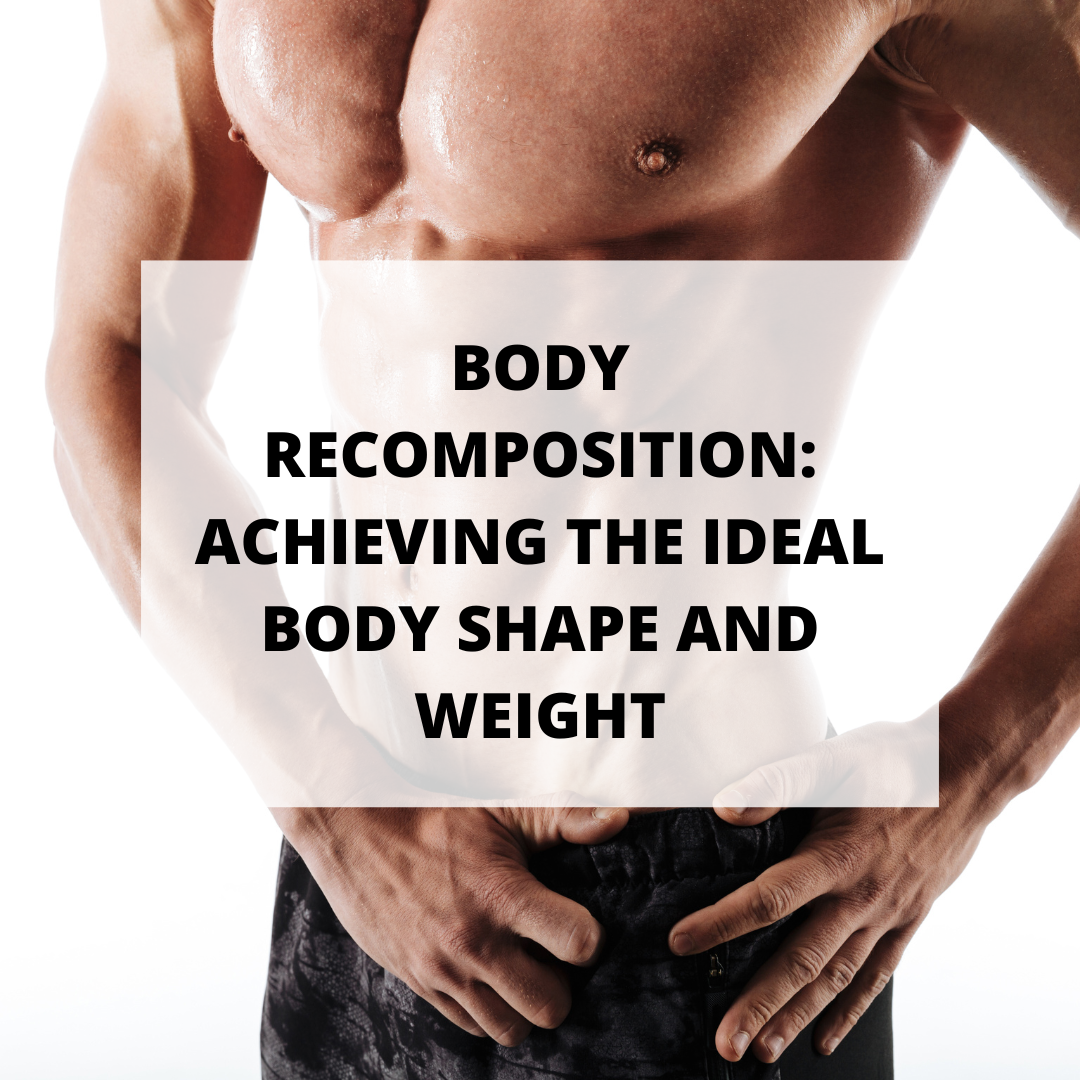
Body Recomposition: Achieving the Ideal Body Shape and Weight
Are you tired of trying every diet and workout routine but still not seeing the results you want? Body recomposition may be the answer you're looking for. In this article, we will explore what body recomposition is, how to do it, and the benefits it can bring.
WHAT IS BODY RECOMPOSITION?
Body recomposition, or "body recomp" for short, is the process of simultaneously losing fat and gaining muscle mass. This can result in a more toned and lean body shape. The goal of body recomposition is to achieve a lower body fat percentage while maintaining or increasing muscle mass. This is different from traditional weight loss, where the focus is solely on losing weight without regard to muscle mass.
HOW TO BODY RECOMP
Body recomposition can be achieved through a combination of diet and exercise. Here are some tips on how to recomp your body:
1. Calculate Your Macros
Macros, short for macronutrients, are the three main components of our diet: protein, carbohydrates, and fats. Calculating your macros is essential for body recomposition. You'll need to eat enough protein to build and maintain muscle mass, while also consuming enough carbohydrates and fats for energy and overall health.
A general rule of thumb is to consume 1 gram of protein per pound of body weight. For example, if you weigh 150 pounds, you would aim to consume 150 grams of protein per day. Carbohydrate and fat intake will depend on your personal preferences and goals.
If you want to plan a diet with foods you like and that hits the number of fats you need you can try AutoMealPlanner. It makes it easy to generate a custom diet and know how much you should eat in each meal.
2. Lift Weights
Resistance training is crucial for building and maintaining muscle mass. Aim to lift weights at least three times per week, focusing on compound exercises such as squats, deadlifts, and bench presses. These exercises work multiple muscle groups at once, allowing for more efficient muscle growth.
3. Incorporate Cardio
Cardiovascular exercise is important for overall health and fat loss. Aim to incorporate at least 30 minutes of moderate-intensity cardio, such as jogging or cycling, into your routine three to four times per week. High-intensity interval training (HIIT) can also be effective for fat loss.
4. Practice Mindful Eating
Mindful eating involves paying attention to your hunger and fullness cues and making food choices that nourish your body. Avoid restrictive diets and instead focus on consuming whole, nutrient-dense foods. This can help with both fat loss and muscle gain.
BENEFITS OF BODY RECOMPOSITION
Body recomposition can offer numerous benefits beyond just a more toned physique. Here are some of the benefits you can expect:
1. Improved Metabolic Health
Losing fat while gaining muscle can improve your overall metabolic health. This can lead to a reduced risk of chronic diseases such as type 2 diabetes and heart disease.
2. Increased Strength and Endurance
Resistance training can improve muscular strength and endurance, allowing you to perform daily tasks with ease and potentially improving athletic performance.
3. Better Body Composition
Body recomposition can lead to a higher muscle mass to fat mass ratio, which can improve overall body composition and reduce the risk of obesity-related diseases.
4. Enhanced Self-Confidence and Body Image
Achieving a more toned and lean body shape can boost self-confidence and improve body image, leading to a more positive outlook on life.
FREQUENTLY ASKED QUESTIONS
1. What is the difference between body recomposition and weight loss?
Body recomposition focuses on simultaneously losing fat and gaining muscle mass, while weight loss solely targets reducing overall body weight.
2. How long does it take to see results from body recomposition?
Results will vary depending on individual factors such as diet and exercise routine, but it typically takes several weeks to several months to see noticeable changes in body composition.
3. Do I need to track my macros for body recomposition?
Tracking macros can be helpful for ensuring adequate protein intake and overall nutrient balance, but it is not necessary for everyone. It is important to find a diet and exercise routine that works best for your individual needs and preferences.
4. Can body recomposition be achieved without lifting weights?
Resistance training is crucial for building and maintaining muscle mass, so it is unlikely to achieve body recomposition without lifting weights. However, incorporating other forms of exercise such as cardio can still be beneficial for overall health and fat loss.
5. Is body recomposition suitable for everyone?
Body recomposition can be suitable for most healthy individuals, but it is important to consult with a healthcare professional before starting any new diet or exercise routine, especially if you have any underlying health conditions.
CONCLUSION
Body recomposition is a holistic approach to achieving a more toned and lean body shape. By combining a well-rounded exercise routine with a mindful eating approach, you can simultaneously lose fat and gain muscle mass, leading to numerous health benefits beyond just a more attractive physique. Remember to focus on individual needs and preferences, and always consult with a healthcare professional before making any significant changes to your diet or exercise routine.

